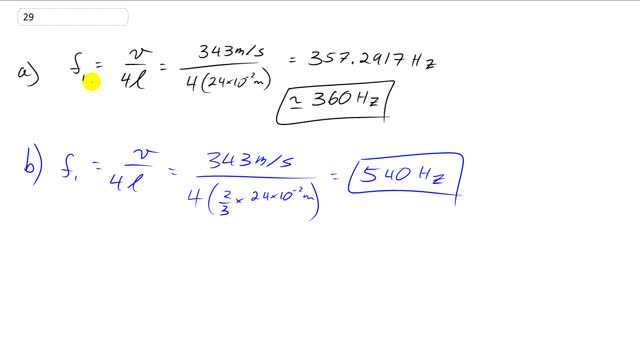
- What resonant frequency would you expect from blowing across the top of an empty soda bottle that is 24 cm deep, if you assumed it was a closed tube?
- How would that change if it was one-third full of soda?

In order to watch this solution you need to have a subscription.
This is Giancoli Answers with Mr. Dychko. A soda pop bottle can be considered a tube that's closed at the bottom end and open at the mouth of the bottle where you're blowing across. So, it's closed at one end only and so that means that the fundamental frequency is going to be v over 4l according to the formulas we're given here. And that's 343 meters per second because the wave that moving is the wave in the air and so it's going to be a sound wave that's moving and so that's why we can put the speed of sound in here for v whereas if we're dealing with a stringed instruments, the speed of the wave on the string which is much faster so, 343 meters per second divided by 4 times the length of the bottle, 24 times 10 to the minus 2 meters. And that gives about 360 hertz. Now, if we fill the bottle up 1/3 that means 2/3 of it is still left as full of air and so the wave form will fit within that 2/3 of air. And so we still have the same 343 meters per second divided by 4 times 2/3 of the bottle's length. And that gives 554 hertz as the new fundamental.